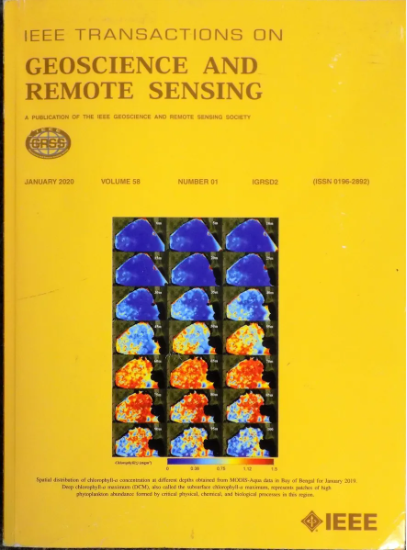Enhancing GPR Multisource Reverse Time Migration With a Feature Pyramid Attention Network
IF 7.5
1区 地球科学
Q1 ENGINEERING, ELECTRICAL & ELECTRONIC
IEEE Transactions on Geoscience and Remote Sensing
Pub Date : 2024-07-11
DOI:10.1109/TGRS.2024.3426606
引用次数: 0
Abstract
The reverse time migration (RTM) algorithm is widely recognized in ground-penetrating radar (GPR) imaging for its high-resolution capabilities. However, the algorithm involves multiple forward modeling making it computationally intensive and less efficient. This article presents a workflow designed to enhance computational efficiency while maintaining the accuracy of RTM imaging. This purpose is achieved by implementing a source encoding strategy that integrates random polarity and time shifts to build a supergather as a new independent excitation source. This approach aims to suppress the crosstalk artifact among integrated excitation sources within the supergather during wave propagation, which could otherwise impact imaging accuracy. Subsequently, by integrating the feature pyramid attention network (FPANet) to further suppress residual multisource crosstalk artifact, thereby enhancing the overall imaging quality of RTM. Evaluations on synthetic GPR data demonstrate the algorithm’s capability to improve computational efficiency without sacrificing imaging accuracy, thereby confirming its effectiveness. Supported by both laboratory and field GPR data, the algorithm’s widespread applicability is proven. In summary, the proposed workflow is expected to enhance imaging efficiency significantly, achieving a利用特征金字塔注意网络增强 GPR 多源反向时间迁移能力
反向时间迁移(RTM)算法因其高分辨率能力在探地雷达(GPR)成像中得到广泛认可。然而,该算法涉及多个前向建模,因此计算密集且效率较低。本文介绍的工作流程旨在提高计算效率,同时保持 RTM 成像的准确性。这一目的是通过实施一种源编码策略来实现的,该策略整合了随机极性和时间偏移,以建立一个超级集合作为新的独立激发源。这种方法旨在抑制波传播过程中超集合内集成激励源之间的串扰伪影,否则会影响成像精度。随后,通过整合特征金字塔注意网络(FPANet)进一步抑制残留的多源串扰伪影,从而提高 RTM 的整体成像质量。对合成 GPR 数据的评估表明,该算法能够在不牺牲成像精度的情况下提高计算效率,从而证实了其有效性。在实验室和现场 GPR 数据的支持下,该算法的广泛适用性得到了证明。总之,所提出的工作流程有望显著提高成像效率,在不影响成像质量的前提下实现 2 美元/次-5 美元/次的加速比。
本文章由计算机程序翻译,如有差异,请以英文原文为准。
求助全文
约1分钟内获得全文
求助全文
来源期刊

IEEE Transactions on Geoscience and Remote Sensing
工程技术-地球化学与地球物理
CiteScore
11.50
自引率
28.00%
发文量
1912
审稿时长
4.0 months
期刊介绍:
IEEE Transactions on Geoscience and Remote Sensing (TGRS) is a monthly publication that focuses on the theory, concepts, and techniques of science and engineering as applied to sensing the land, oceans, atmosphere, and space; and the processing, interpretation, and dissemination of this information.
文献相关原料
| 公司名称 | 产品信息 | 采购帮参考价格 |
|---|
 求助内容:
求助内容: 应助结果提醒方式:
应助结果提醒方式:


